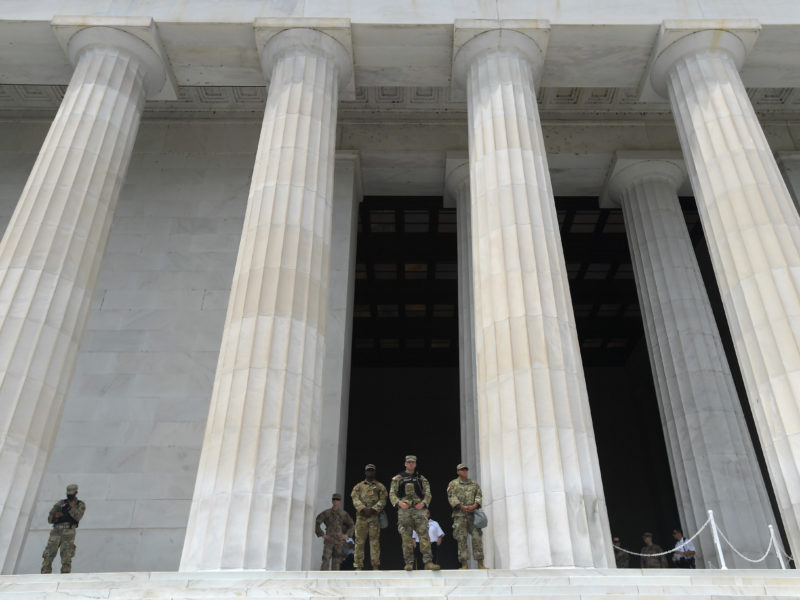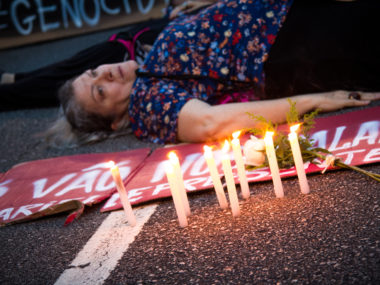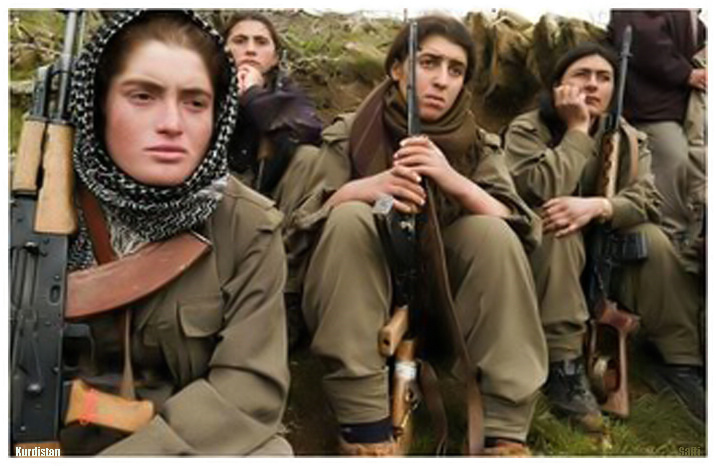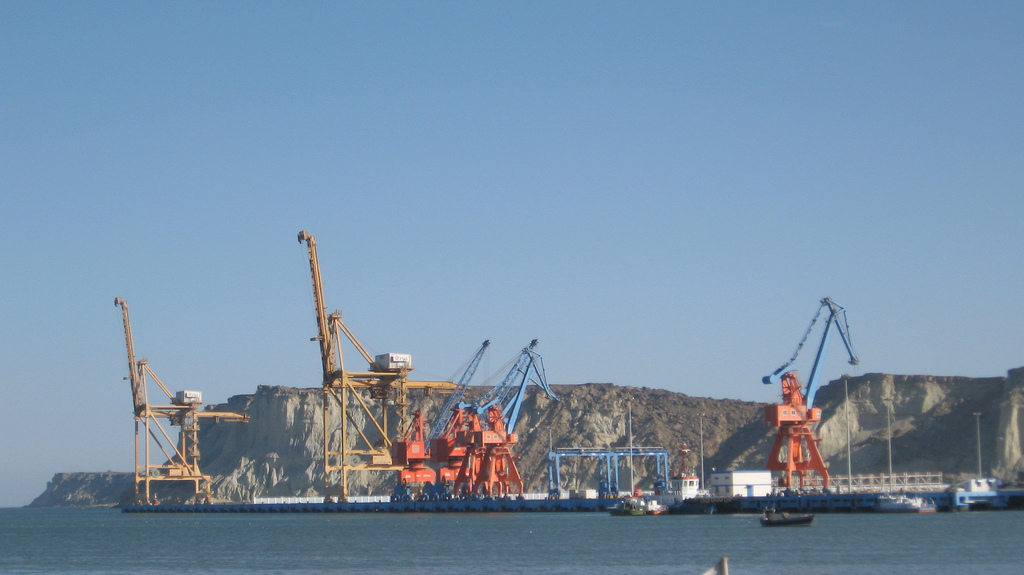Guest post by Eric Hundman and Sarah E. Parkinson
Between June 2 and 4, after a week of national protests against police brutality and racial injustice, the Chief of the US National Guard, the Chairman of the Joint Chiefs, and the Secretary of the Army issued strikingly similar statements emphasizing that members of the US military swear to “support and defend” the Constitution. The oath is directly linked to soldiers’ responsibility to refuse illegal orders and came after security forces violently expelled peaceful protesters from Lafayette Square near the White House on June 1.
Concurrently, in a speech broadcast from the White House, President Trump declared himself a “law and order president” before making his way, heavily protected, through the just-cleared square to stage a photo outside St. John’s Church. The same week, in a column solicited by the New York Times, Senator Tom Cotton (R-AR) called for an “overwhelming show of force to disperse, detain and ultimately deter lawbreakers,” insisting that protesters should be given “no quarter.”
Thirty-one years to the day before Cotton’s call, Chinese officials were deciding how to respond to nationwide protests centered on Beijing’s Tiananmen Square. When the order came to use force against civilians, most of the soldiers in the People’s Liberation Army obeyed. Though the situation in DC has somewhat calmed, reporting indicates that firing on demonstrators was a real possibility. Recent events, including a new presidential threat to use “serious force” against ongoing protests, have again raised the question: what would US military officers do if President Trump gave the order to fire on protesters?
Officers in both state and non-state military organizations are political, social, and strategic decision-makers who work hard to balance competing pressures from both military and non-military peers. When deciding how to respond to controversial orders, including orders to suppress protesters, our research shows that officers typically focus on two questions to determine whether the orders merit resistance: (1) their relationships with the commander who issued the order(s); and (2) whether the orders affect important social relationships, such as those associated with kinship, home region, class, or past service history. Among the officers we studied, disobedience was not simply about protecting those to whom officers were loyal. Rather, officers analyzed the moral, reputational, and strategic consequences of orders in ways they felt their superiors could not, and pushed back in the face of potentially catastrophic outcomes. Disobedience thus often played an important role in reinforcing organizational norms, obtaining battlefield success, and driving political change.
Situations like that in Washington, DC, where chains of command are unclear, conflicting, or simply “unorthodox,” make coordination difficult and increase the likelihood that soldiers will disobey. While previous research has focused heavily on ethnicity as a source of such competing pressures—with scholars finding, for example, that shared ethnic background reinforces soldiers’ political loyalties—we found that a much broader spectrum of social affiliations influenced officers’ decisions to disobey. Service in elite, specialized units, exposure to networks of regime opponents, and personal origins in marginalized communities all affected officers’ decisions to disobey.
In several cases, elite military officers’ rank and life-long service seem to have fostered opposition to civilian authorities’ perceived “nonstrategic” motivations. That is, military discipline and professionalism sometimes generate disobedience, rather than prevent it. This dynamic may have been behind recent statements by the military’s top brass, who are socialized to guard against the perception that the US military is politicized and fear backlash like that generated by tragedies such as the 1970 Kent State Massacre. Scholars of civil-military relations have found that this kind of “civil-military gap” may indeed lead military elites to be less likely to obey civilian leaders.
Military reticence to obey controversial civilian orders may be one reason why the Trump administration deployed civilian forces controlled by agencies such as the Departments of Justice, Homeland Security, and Interior alongside the DC National Guard during the June protests. Trump appointees such as US Attorney General William Barr control the chain of command for these forces, which are often equipped with military-grade weapons and have sweeping powers to carry out “arbitrary stops and searches.” And whereas the US National Guard has clear standards related to discipline and accountability, other forces, including the US Customs and Border Protection (who were on-site during the DC protests), are recruited, socialized, and trained very differently. For example, members of the Bureau of Prisons Special Operations and Response Teams deployed to DC repeatedly refused to identify themselves to residents or to members of the media, creating the impression that they were operating with impunity.
Signs like this point to a hypothesis that social science research backs: the organizational cultures, accountability structures, and leadership that govern these civilian forces make them more willing to obey an order to target peaceful protesters. And unlike military leaders, the US civilian political appointees to whom these civilian forces report have adopted rhetoric that criminalizes demonstrators and shifts them into the operational purview of non-military agencies. Acting Commissioner of Customs and Border Protection Mark Morgan, for instance, publicly declared largely peaceful demonstrations “acts of domestic terrorism” and labeled protesters “radicals & agitators.” Attorney General Barr labeled protesters “extremist agitators,” although none of the 400 people arrested during the DC protests were found to have ties to extremist groups.
These words are not simply rhetoric. The language and tropes signal permissiveness toward violence against “threats to state security,” rather than a need for restraint towards law-abiding American citizens. One DC National Guard soldier, in contrast, said he felt conflicted upon being deployed: “It was heart aching. I felt like we shouldn’t be put against our own people.”
The Trump administration’s decision to deploy non-military armed actors is, as research shows, the rule rather than the exception. The difference between tragedies like Tiananmen Square and averted disasters like that during the People Power Revolution in 1986 is not simply one of authoritarian versus democratic governance—the Philippines was an autocracy when its troops refused to fire on protesters. Whether individuals in a military will, en masse, agree to fire on fellow citizens is driven instead by more complicated questions of organizational culture, political education, individual identity, discipline, social ties, law, and leadership. Tiananmen, in other words, could happen in the US.
Past abuses by civilian agencies, which watchdogs have long decried; variation in oversight, socialization, and regulation of American domestic security forces; and some American politicians’ explicit calls to “send in the troops” give comparative research on paramilitaries, militias, and state security forces a disturbing new resonance in American politics. Media and policy attention is now rightly focused on local police forces and National Guard units sent to control demonstrations. However, extensive new research and on-the-ground experience suggest that the spotlight may also be usefully directed at the training, socialization, and oversight of domestic security forces who are deployed alongside them.
Eric Hundman is an Assistant Professor of Political Science at NYU Shanghai. Sarah E. Parkinson is the Aronson Assistant Professor of Political Science and International Studies at Johns Hopkins University.





